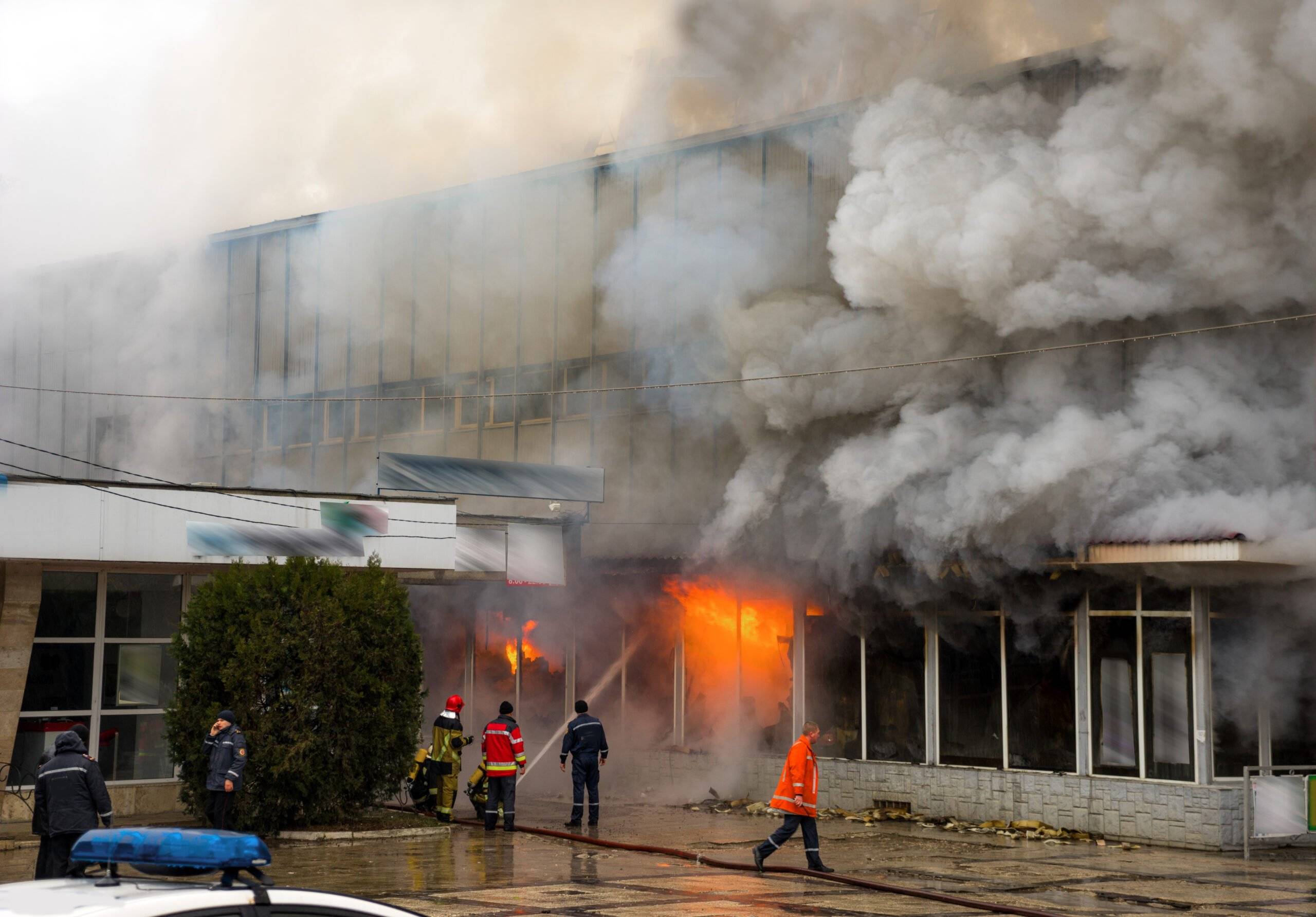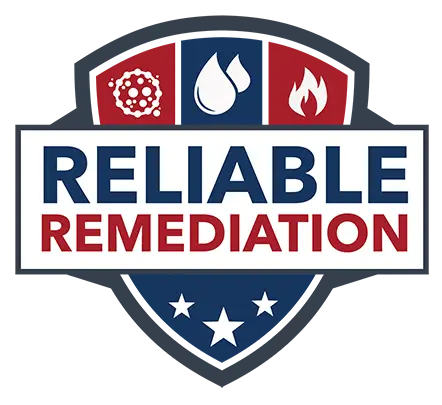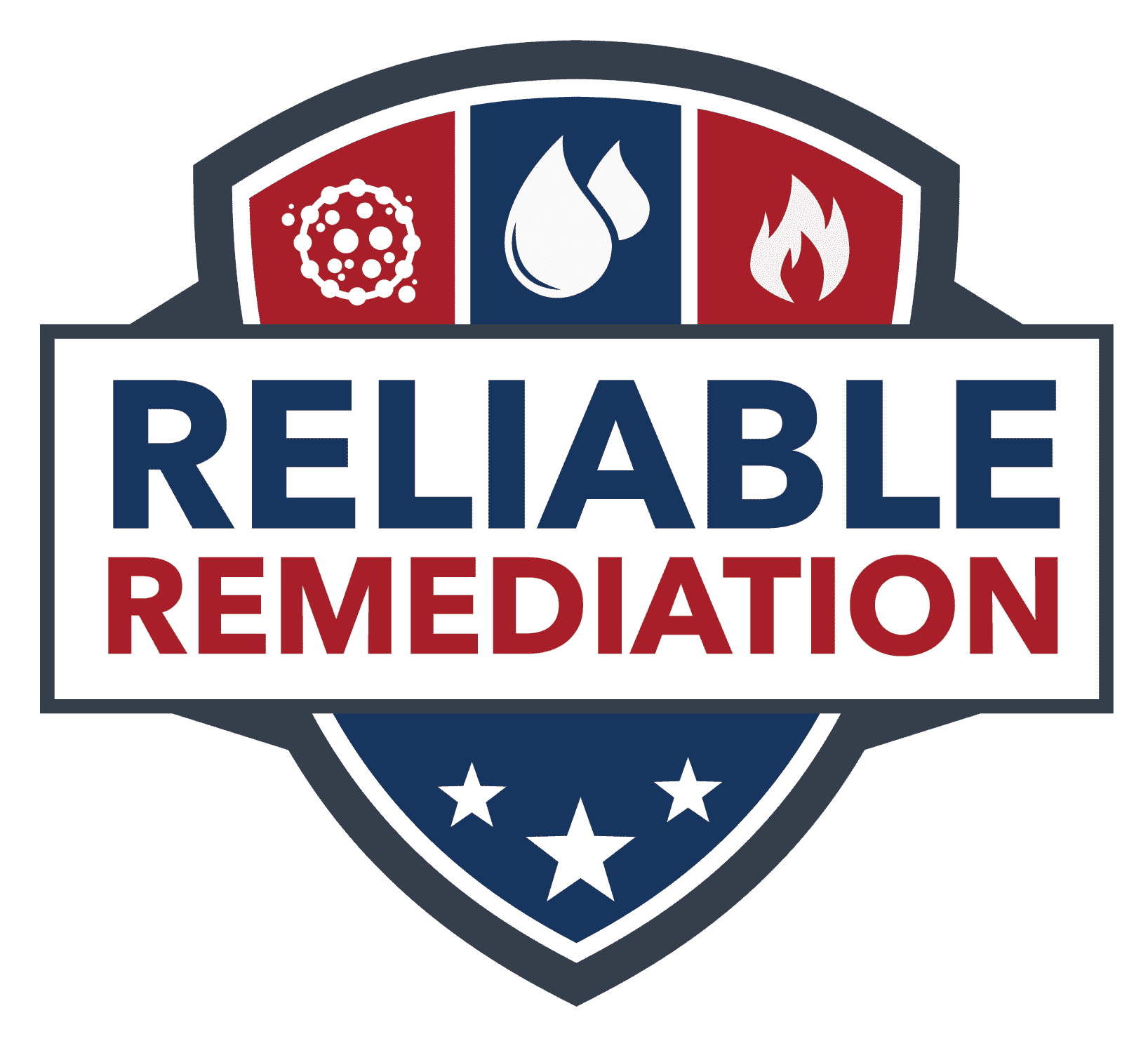Smoke Damage
After a fire, lingering smoke contains a dangerous mix of particles and gas Call NowRequest an EvaluationSmoke Damage
Smoke damage tends to be underestimated and is often disregarded as minor. But smoke from a fire is pretty toxic and can make you sick. Smoke is highly corrosive and can ruin anything with enough time and strength. In most cases, smoke from a home or commercial fire is not coming just from burnt wood, but other items like plastics, leathers and other chemicals. There are gases like carbon monoxide, the gas that comes out of the car and a huge mixture of gases – 5,000 to 10,000 different gases – including arsenic, hydrogen cyanide, formaldehyde and polycyclic aromatic hydrocarbons, some of which are known to cause cancers.
Smoke is made up of a complex mixture of gases and fine particles produced when wood and other materials burn. The biggest health threat from smoke is from fine particles. These microscopic particles can penetrate deep into your lungs. They can cause a range of health problems, from burning eyes and a runny nose to aggravated chronic heart and lung diseases. Exposure to particle pollution is even linked to premature death.

Air Fresheners are not recommended
- Air Fresheners are ineffective
- They don’t remove the pollution
- They just make it smell nice
Portable high-efficiency filter devices – HEPA devices – are useful for cleaning the air, but only for a small room. They’re not designed to clean air in an entire house. Professional remediation companies have larger HEPA air filtration devices with carbon filters that can be used to help make the affected area safer and should be used during the cleaning and mitigation process.
If you need to be inside a structure after a recent fire loss, using an N95 face mask or a respirator with P-100 filters can be useful. It doesn’t cost a whole lot of money and it removes particulate matter.
If you smell smoke, you’re breathing it.
But if you can’t smell it, you’re OK. Is that true?
Yes and no. Many chemicals, when they burn, have no odor – like toxic carbon monoxide. But the smelly stuff comes hand-in-hand with carbon monoxide. So there’s truth that if you smell it, your lungs are exposed to it. But if you can’t smell it, that doesn’t mean you’re not exposed. Everybody is different at detecting certain odors. Maybe you have nasal congestion. Maybe you tend to breath through your mouth, not your nose.
Different Types of Smoke Damage Require Different Cleaning and Mitigation
Resident Smoking Residue (Environmental Tobacco Smoke)
The most common type of smoke damage is the type caused by residents that smoke. In a multifamily building, contractors and landlords deal with odors caused by cigarettes or marijuana on a regular basis. From unpleasant odors to significant surface damage, tenants who are smokers can cause a lot of damage. Remediating this type of smoke damage typically requires intense mechanical cleaning (physically cleaning all affected surfaces). The cleaning is then followed up with treatments of chlorine dioxide and sometimes require the use of specialty equipment.
Protein Smoke Damage
Second to environmental tobacco smoke, kitchen fires are another common issue that will produce protein smoke damage. This occurs from food burning and smoke clinging to painted surfaces or wood, which can cause permanent discoloration to any surface it clings to.
Petroleum Smoke Damage
Lastly, there’s petroleum smoke damage. When an oil-based substance is burned, petroleum smoke damage occurs. This is a darker smoke that lingers on every type of material that it comes in contact with, often staining the surface. It can be cleaned with a solvent designed to cut through grease.
Wet Smoke Damage
Wet smoke occurs during a slow-burning fire with a low temperature. It’s typically the hardest form of smoke damage to clean as it tends to be sticky and thick, latching on to all surfaces and objects. There is a strong odor associated with wet smoke as well, making clean up a longer and a more involved process.
Dry Smoke Damage
Opposite of wet smoke damage, dry smoke damage occurs in a high-temperature fire. This damage produces an extremely fine, powder form, making it easier to clean than most smoke types. While a solid form of smoke damage may seem easy to clean, if it lands on any porous surface, it may trap itself within holes in the object, making clean-up difficult.
Time is of the Essence
The sooner you start the restoration process, the lower the level of damage to the property will be. Here’s what the Institute of Inspection Cleaning and Restoration Certification (IICRC) says for a timeline of a fire:
Within Minutes:
Acid soot residues cause plastics to yellow; small appliances located close to the source of combustion discolor; highly porous materials (marble, alabaster) discolor permanently.
Within Hours:
Acid residues stain grout in bathrooms; fiberglass bath fixtures may yellow; uncoated metals tarnish; counter tops may yellow; finishes on appliances, particularly refrigerators, may yellow; furniture finishes may discolor.
Within Days:
In time, acid residues cause painted walls to yellow permanently; metal corrodes, pits and rusts; wood furniture requires refinishing; vinyl flooring requires refinishing or replacement; clothing becomes soot-stained; upholstery stains permanently.
Within Weeks:
Restoration costs escalate tremendously. Synthetic carpet fibers may yellow or discolor permanently; silver plate is corroded permanently; glass, crystal, china may require replacement due to severe etching and pitting caused by prolonged exposure to acid soot residues.
It’s Easy to Get the Help You Need

Get an Evaluation

Receive a Customized Plan


